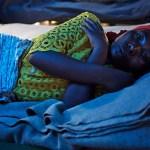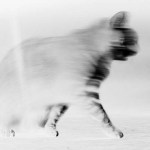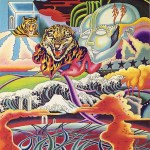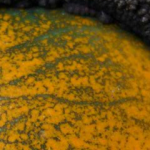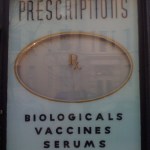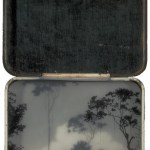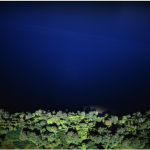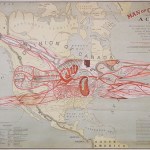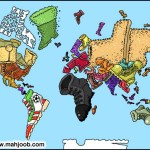
Evolve
Electroformed Copper, Vitreous Enamel, Sterling, Pearls, Lens, Feathers, Steel, Worm
Photo: Courtney Frisse
Last week I featured electroformed copper pendants by Kristina Glick Shank. I also found another outstanding electroformed copper artwork, this one by Kristin Mitsu Shiga. I think it's a wonderful idea to portray a chrysalid, the very symbol of transience, in metal - one of the most permanent materials possible. I am sorry it's titled Evolve - I don't love it when the concept of evolution is conflated with the concept of individual development. But this piece is so interesting…
A sexual violence victim recovers in Goma, Congo
photo by Endre Vestvik
A few weeks ago, the NYT published a horrifying account by Nicholas Kristof of the pervasive sexual violence left over from Liberia's civil war. A major survey in Liberia found that 75% of Liberian women had been raped - most gang-raped. And many of the victims are children:
Of course, children are raped everywhere, but what is happening in Liberia is different. The war seems to have shattered norms and trained some men to think that when they want sex, they need simply to overpower a girl. Or at school, girls sometimes…
"The cat has too much spirit to have no heart."
Quote by Ernest Menaul, via A Blog Around the Clock
Chromogenic print by Hirsch Perlman: An Animus Cat Antagonist, 2008. Via 3quarksdaily.
If you've been following the Jared Diamond/New Yorker controversy, or my ongoing posts on journalism vs. blogging (here, here, here, here, here), you might be intrigued by this conversation about the culture of fact-checking in journalism, between journalism professor Jay Rosen and programmer Dave Winer, in their podcast series Rebooting the News. Consider this riddle: how is fact-checking in journalism like (or unlike) debugging a computer program?
Here's Rosen's take on it:
One of the features of a rebooted news system would actually be borrowed from the tech world. And it's the notion of…
I finally got around to reading my backed-up RSS feeds, and had the chance to peruse these, well, demented 1970s biology textbook illustrations uncovered by Crooked Timber. I mean, what? No - what??! Crooked Timber calls it a "Groovy Prog Rock Wannabe Biology Text." I don't know what to say, except that I went to Artomatic yesterday, which had something like a thousand artists, and this psychedelica is far trippier than anything I saw there. Whoa, man.
For the record, if I had, as a child, learned to associate biology with angry disembodied leopard heads flying towards me on Frisbees of fire…
In the June Atlantic Monthly, Joshua Wolf Shenk has a long, moving article about what may be the longitudinal study of all longitudinal studies - the Harvard Study of Adult Development (Grant Study), begun in 1937. Its creator Arlie Beck planned to track 268 "healthy, well-adjusted" men from their sophomore year at Harvard through careers, marriage, families, retirement and eventually death - and somehow, from this glut of longitudinal data, to glean the secrets of "successful living."
But the portrait Shenk paints is as full of pathos as it is of success.
Delving into the case files, now…
Thank goodness Science has finally given us protection against. . . Kooties!
Kootie Killer promises to "kill 99.9% of germs & Kooties without water!" This claim is clearly rigorously lab-tested and evidence-based, but although I wouldn't dream of questioning its veracity, it does invite the question. . . what the heck is a Kootie?
Personally, I always thought cooties (with a "c") were symbiotic, invisible organisms that spontaneously accrued on children, causing healthy developmental conflict with members of the opposite sex. Shows you what I know. Apparently, the Kootie is a yellow-…
It is no secret that 3 Quarks Daily is one of my favorite blogs. It's the first blog I told my boyfriend to put on his Google Reader (he'd already added BioE, but still). Which is why I'm overjoyed to announce that 3QD has created its own prize for blogging. It's called a Quark. Oh, how I covet the Quark - especially the Strange Quark. And the finalists are to be judged by the 3QD editors and their guest judge . . . Stephen Pinker! w00t!
Any blog post on a natural or social science topic published since May 24, 2008 is eligible. The catch? Nominations are only open until midnight on June 1.…
This would be funnier if it weren't so painfully true. Also see the sequel.
I didn't get to this for a few days because I was working too hard to blog last week. In the meantime, Language Log responded with an especially egregious example of this sort of oversimplification.
Cartoon by Jorge Cham, via Sheril at the Intersection.
Just when I was wondering why there hasn't been more mainstream coverage of the Jared Diamond/New Yorker lawsuit I blogged about at the beginning of this month, Columbia Journalism Review has an update. And in a recent article in Science, Diamond commented, saying "The complaint has no merit at all."
Oddly, the Science article (which is unfortunately subscription-only) frames this whole situation as a conflict between different disciplines - mainly science and journalism.
Three worlds collide in this case. First is the world of science, specifically anthropology, which uses fieldwork and…
This is. . .
A. The surface of one of Jupiter's moons
B. Thermophilic archaebacteria in a hot spring
C. The pigmented iris of a Madagascar gecko
D. An electroformed enamel and copper pendant
E. Multicolored lichen at Enchanted Rock, Texas
Answer after the fold!
D* is correct: it is actually an enamel and copper electroformed pendant called "EyeSpy" by artist Kristina Glick Shank.
Shank's series of electroformed pendants impress me with their blend of controlled detail and organic (well, technically, mineral) textures. The electroforming gives an uncontrolled, natural feeling to the pieces…
Morgan Care Pharmacy on P St. in Georgetown has all the character so sorely lacking from new drugstore franchises. Drugstores used to be so different: as a child, I savored root beer floats at our local drugstore soda fountain counter. (I know, very Norman Rockwell of me.) Are there any pharmacy soda fountain/luncheonette counters left today?
The Princeton Art of Science competition has named its 2009 winners. The image above, by Celeste Nelson, is a bright field micrograph of baby squid (Loligo pealeii). See the rest of the winners here.
Los Angeles Electric Isle
Brooks Salzwedel
Brooks Salzwedel's solo show opened May 16 at the Tinlark Gallery.
The artist works in layers of graphite and translucent resin, which create an especially nice effect in vintage tins. Imagine if you picked up a rusty old tin on an abandoned worksite or in an old mining town, opened it, and found someone's half-remembered memory inside - gradually accreted there like candle wax. Salzwedel's work is a little like that.
Little Anacin Tin
Brooks Salzwedel
High Forest Tin
Brooks Salzwedel
Broken Wires
Brooks Salzwedel
Via NOTCOT
My first thought on seeing the new Toyota Prius commercial was, "are those cells and membranes?!" No, they're people in costumes, but the resemblance of the Prius' cartoon world to a cell animation is pretty remarkable. The sun TOTALLY looks like it has transmembrane receptors on it.
My second thought was, wow, this is perhaps the first commercial I have seen to really make compelling use of high-definition TV. I kept getting closer and closer to my screen. So do yourself a favor, and click through to watch it in high-def if you have a decent connection. It's hypnotizing.
I love this line of covers for a UK publisher's re-issue of sci-fi classics: their simplicity underscores the stark, anxious, fractured psychological underpinnings of futuristic fiction.
As author Stephen Baxter told New Scientist, "Science fiction has rarely been about the prediction of a definite future, more about the anxieties and dreams of the present." That's why covers that cater to indulgences (lush technicolored paintings of muscular space barbarians defending busty astronaut ladies from tentacled aliens, etc.) are fun, yet leave me feeling too often that the author's vision has…
Edge of Loch, Scotland
Jason Hawkes
Phoographer Jason Hawkes specializes in aerial views that emphasize patterns in nature and manmade structures. While his Apartments, Hong Kong first caught my eye at io9, Edge of Loch, Scotland plays even more fascinating games with scale. Is that a closeup of a shoreline crusted with lichen, a crowd of lilypads suspended on the water's surface, or a gods' eye view of toylike trees? Look close enough to be sure it's the latter, and you risk being lost in the incredible cobalt of the water.
Apartments, Hong Kong
Jason Hawkes
Then there's London's O2 arena…
Another fabulously weird map, from the great blog Strange Maps. This one is entitled "The Man of Commerce" and dates to 1889.
According to the American Geographical Society Library,
The highly detailed 31" x 50" map/chart conflates human anatomy with the American transportation system, in an apparent attempt to promote Superior as a transportation hub.Its metaphor makes West Superior "the center of cardiac or heart circulation"; the railways become major arteries; and New York is "the umbilicus through which this man of commerce was developed."The explanatory notes conclude: "It is an…
Students and laypeople alike often view biotech patents with baffled disbelief. How is it possible to patent bacteria? Mice? Cell types and DNA sequences? How can someone else "own" gene sequences that all of us have carried inside our bodies since birth?
Honestly, as a biologist, the concept of patenting a gene doesn't really throw me for a loop. Think about it: although we all have genes, we can't read them unless we use a variety of lab techniques, many of them patented. In turn, reading the sequence isn't any use unless we know why we care - that this gene is relevant and can be used to…
I have a feeling that this is what Isis sees when she looks at a map. Only with sexier shoes, of course.
From one of my new favorite blogs - Strange Maps. Thanks to Jake for the find.

